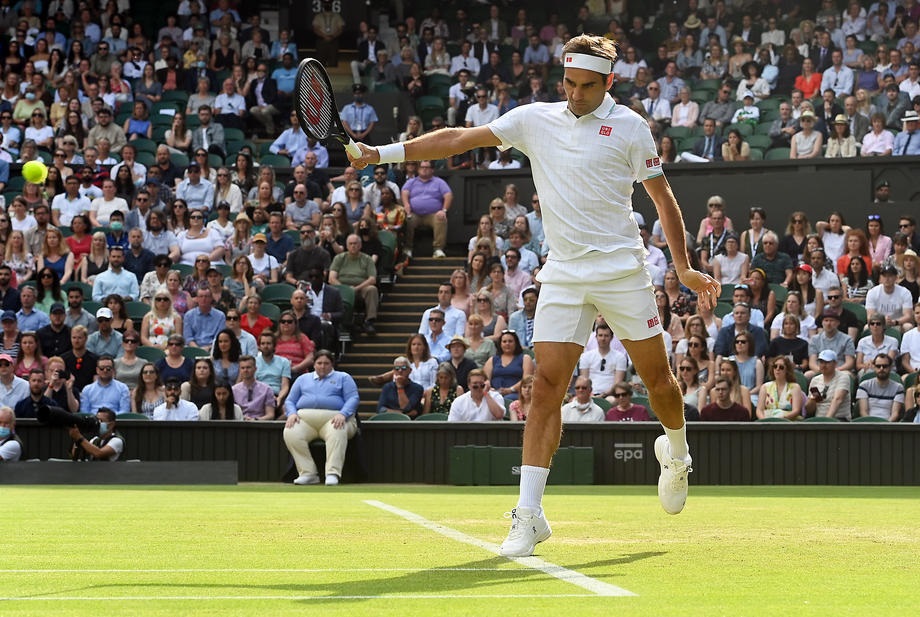Don't Miss
- Mubadala Citi DC Open Men’s and Women’s Tennis Draws and Order Of Play for Saturday, July 27, 2024
- Paris Olympic Tennis Draws and Order Of Play for Saturday, July 27, 2024
- Kitzbuhel Generali Open Draws and Order of Play for Friday, July 26, 2024
- Paris Olympic Tennis Singles and Doubles Draws
- Croatia Open Umag Draws and Schedule for Friday, July 26, 2024
- Atlanta Open Draws and Order of Play for Thursday, July 25, 2024
- Croatia Open Umag Draws and Schedule for Thursday, July 25, 2024
- Laver Cup Tennis 2024 Is in Berlin September 20-22 • Almost all the top men’s players will be playing
- Coco Gauff Named Team USA Flag Bearer for Olympic Games
- Kitzbuhel Generali Open Draws and Order of Play for Wednesday, July 24, 2024
- Croatia Open Umag Draws and Schedule for Wednesday, July 24, 2024
- Atlanta Open Draws and Order of Play for Tuesday, July 23, 2024
- Fils upsets Zverev for Hamburg title, Borges beats Nadal in Bastad
- Kitzbuhel Generali Open Draws and Order of Play for Tuesday, July 23, 2024
- Croatia Open Umag Draws and Schedule for Tuesday, July 23, 2024
Tennis Hall of Famer Budge Patty Passes Away By Joel Drucker
- Updated: October 8, 2021

| By Joel Drucker American John Edward “Budge” Patty, a 1977 International Tennis Hall of Fame inductee who was ranked number one in the world in 1950, died on October 3, 2021, at the age of 97. For more than 70 years, Patty lived in Europe, most recently in Lausanne, Switzerland. Patty was a four-time major champion, having won the singles titles at both Wimbledon and Roland-Garros in 1950, as well as a Wimbledon doubles title (1957) and Roland-Garros mixed doubles title (1946). International Tennis Hall of Fame President Stan Smith commented, “Budge Patty was one of the great American players of the 1940s and 50s. Winning over 70 tournament titles is remarkable, and to win Wimbledon and Roland-Garros back-to-back is a massive feat. While he competed before my time, I’ve often heard about how beautiful and elegant his game was. He will be remembered as a standout among tennis history’s greatest champions.” Graced with a seemingly genetic brand of tranquility, Patty’s subdued manner made it easy for him to play well under pressure. It also helped that he had a forehand volley frequently noted as one of the greatest in tennis history. The Patty volley was only one of the many excellent shots that took him to the top, most notably in 1950, when Patty became only the second American man to win the singles titles at Roland-Garros and Wimbledon in the same year. Don Budge had accomplished this feat in 1938. Since then, the only other American male to earn the Paris-London double was Tony Trabert, in 1955. Patty paired with childhood practice partner and fellow future Hall of Famer Pauline Betz, to win the mixed doubles championship at Roland-Garros in 1946. Eleven years later, at the age of 33, he joined forces with 43-year-old Gardnar Mulloy on a surprising run to the 1957 Wimbledon title, in the finals upsetting the first-seeded team of Lew Hoad and Neale Fraser. |

| Born in Fort Smith, Arkansas on February 11, 1924, Patty moved to Los Angeles in his early childhood. The name “Budge” came from his older brother, joking that young John Edward scarcely displayed much urgency and therefore wouldn’t “budge.” Soon after Patty picked up tennis as a child, Betz suggested he take lessons at the Beverly Hills Tennis Club. Working there with instructor Bill Weissbuch, Patty caught the attention of actors Barbara Stanwyck and Robert Taylor. They subsidized Patty’s trips to national junior championships, many of which Patty won, including the National Boys’ 18 singles in 1941 and ’42. Following four years of military service in during World War II, Patty resumed his tennis career. Between 1947 and ’57, he was ranked seven times in the world’s top ten and won 76 singles titles. Patty’s 1950 Wimbledon victory made him the fourth straight Southern California-raised man to triumph at the All-England Club (the others being Hall of Famers Jack Kramer in ’47, Bob Falkenburg in ’48, Ted Schroeder in ‘49). By that time, Patty had distanced himself from his roots, having started to base himself in Paris in 1946. In the process, he became quite the sophisticate. A 1953 article in World Tennis magazine written by Gloria Butler described an Egyptian artist drawing Patty: “One half of the tall young man was dressed in tennis garb with a racket in one hand; the other half was impeccable in full evening dress, with a cigarette in his fingers.” Naturally, Roland-Garros was an exquisite fit for a man of such elegance. In 1948, Patty reached the semis at the French Championships, losing the first of several enthralling five-setters he would play versus Jaroslav Drobny. The next year, he reached the final. At last, in 1950, Patty went the distance, in the finals beating Drobny, 6-1, 6-2, 3-6, 5-7, 7-5. Compared to Paris, Patty’s run to the 1950 Wimbledon title was easy. Not once was he extended to five sets. Also aiding Patty’s cause: Drobny was beaten in the semis by Frank Sedgman. Patty won the final, 6-1, 8-10, 6-2, 6-3. He lived out the rest of his years in Europe, earning a living in real estate, continuing to play social tennis – an urbane expatriate par excellence. As Christopher Clarey wrote in a 1997 Tennis magazine profile, “Patty’s is a patrician voice, one that conjures up cocktails in the clubhouse, summers on the coast and winters on the slopes.” Patty is survived by his wife, Marcina, and two daughters. |






